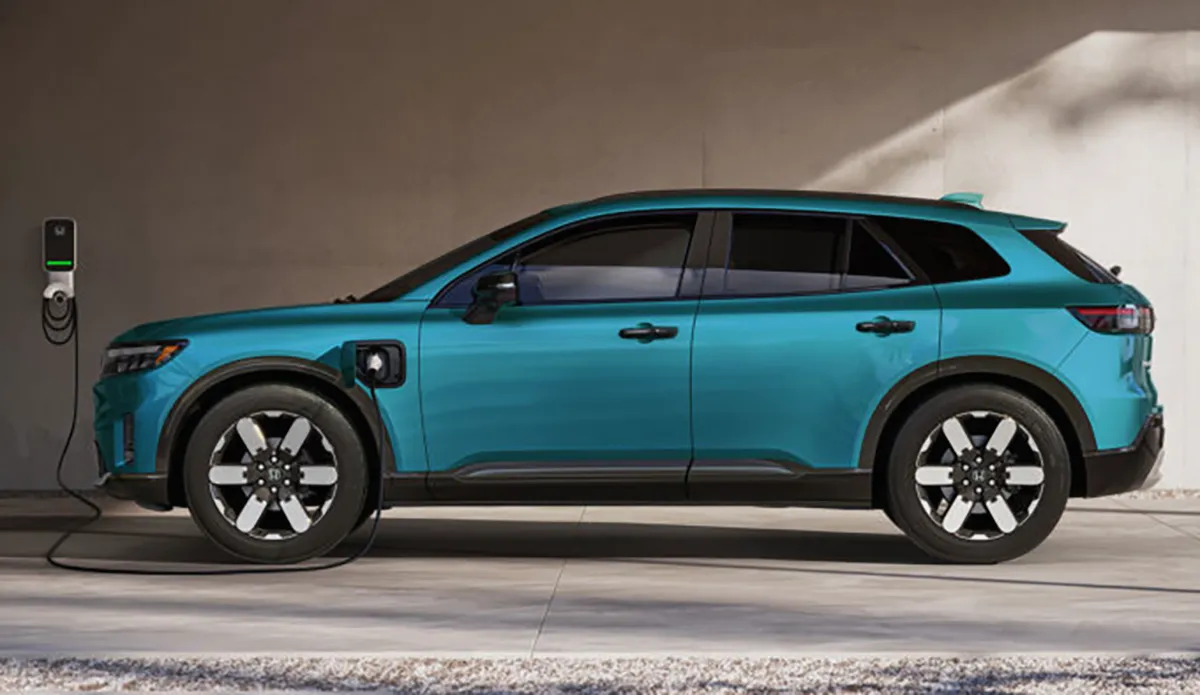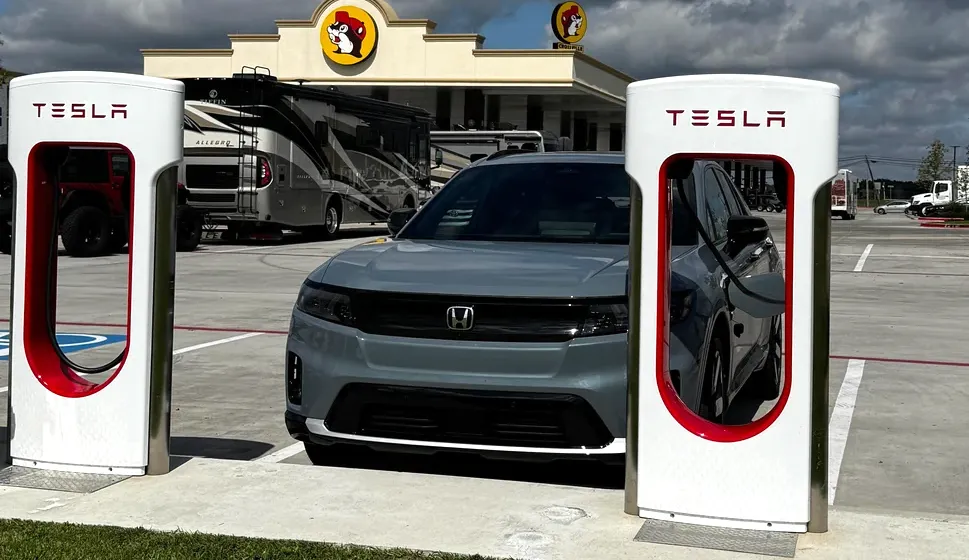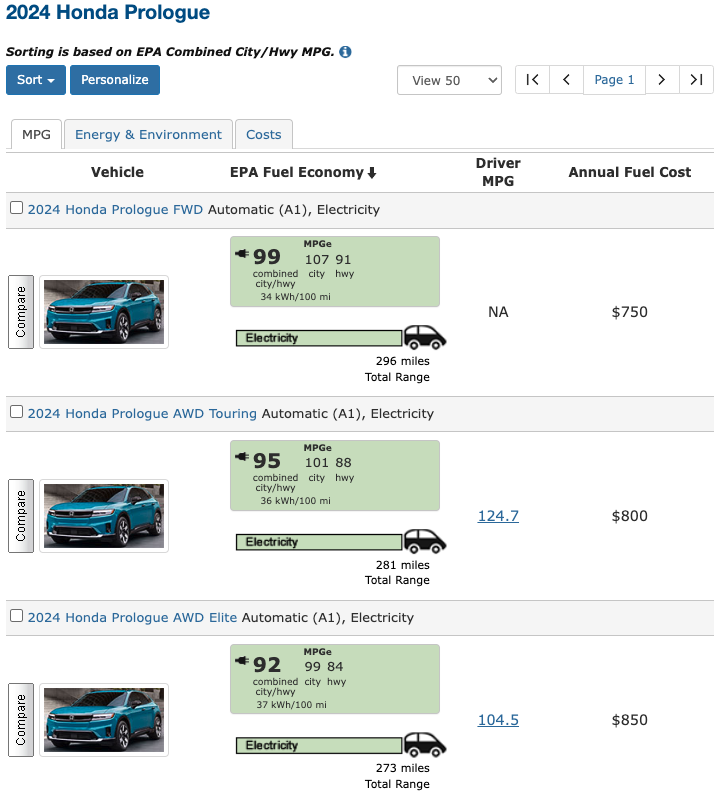Honda Prologue Charging Guide: Everything You Need to Know About Charging This EV

The Honda Prologue marks Honda’s first step into the all-electric vehicle market. This SUV comes equipped with an 85kWh battery across all trims, offering an estimated range of 296 miles (2WD) and 273 miles (AWD). This range is designed to meet the needs of both both daily commutes and extended trips.
As with any EV, charging is an integral part of vehicle ownership, influencing convenience and overall usability. For Honda Prologue owners and potential buyers, understanding charging options is crucial—whether it’s utilizing public charging networks, setting up a home charger, or calculating the cost of charging. In this article, we’ll explore the Prologue’s charging options, its compatibility with public and home charging solutions.
Charging Options for Honda Prologue
The Honda Prologue is equipped with an SAE J1772 AC charging port for Level 1 and Level 2 charging and a CCS1 DC charging port for fast charging. These ports are standard across most EVs in North America, providing flexibility when it comes to finding compatible charging infrastructure.
While Honda has not officially disclosed the Prologue’s detailed charging specifications, it is well known that the Prologue was developed using the Chevrolet Blazer EV platform. As both vehicles share the same platform, battery, and motor systems, it is reasonable to infer similar charging performance based on the Blazer EV’s specifications.
Chevrolet Blazer EV Charging Specifications
- AC Charging: Supports up to 11.5kW, providing approximately 34 miles of range per hour with a Level 2 charger.
- DC Fast Charging: Supports up to 150kW, adding around 65 miles of range in just 10 minutes.

Upon cross-referencing these derived figures with Honda Prologue’s available data, the estimated specifications align perfectly. This includes:
- AC Charging: 34.1 Miles per Hour
- DC Fast Charging: 65 Miles per 10 Minutes
This analysis confirms that the Honda Prologue offers practical and competitive charging capabilities for both home and public charging scenarios, backed by data from both its platform and official references.
Public Charging for Honda Prologue
The Honda Prologue is equipped with J1772 AC connectors and CCS1 DC connectors, making it compatible with a wide range of public charging networks in North America. This includes popular providers such as ChargePoint, Electrify America, and EVgo.
Accessing Public Charging Networks
To find charging stations near you, you can use various apps and platforms that provide real-time updates on station locations, power levels, and availability. Recommended options include:
You can use the map link these platforms provide or simply download these apps to locate charging stations that suit your needs, whether you’re planning a long trip or looking for nearby charging options during your daily routine.
Tesla Supercharger Compatibility
In recent years, Tesla has been gradually opening its Supercharger network to non-Tesla EVs, allowing vehicles with CCS1 adapters to access these fast-charging stations. For Honda Prologue owners, there’s even better news: starting in January 2025, Honda will officially support the use of Tesla Superchargers through a Tesla to CCS1 adapter. This development will significantly expand charging options, especially in areas where Tesla Superchargers are more prevalent.
For a detailed guide, refer to our article: Can Honda Prologue use Tesla Chargers, which outlines the options, Process and adapter compatibility for using Tesla Superchargers.

How to Charge Honda Prologue at Home?
Charging your Honda Prologue at home is one of the most convenient and cost-effective ways to ensure your EV is always ready for the road. In addition to using public charging stations, installing a home charger provides a reliable solution for daily recharging needs.
Home Charging Options
- Install a J1772 Charger: The Honda Prologue is equipped with an SAE J1772 connector, so installing a J1772-compatible home charger is the most straightforward solution.
- Using a Tesla Charger: If you already have a Tesla home charger installed, you can charge the Prologue by using a Tesla to J1772 adapter. This saves the need for installing an additional charger.
- Dual-Charger Setup: If you have both a Tesla and a Honda Prologue at home, you can install two separate chargers—one for Tesla and one for Prologue. To maximize flexibility, you can also add a J1772 to Tesla adapter to the J1772 charger, allowing it to charge both vehicles as needed.
Professional Installation Requirements
Installing a Level 2 home charger typically requires a 240V outlet, which is not standard in most residential homes. For this reason, it’s important to hire a licensed electrician to:
- Evaluate Your Home’s Electrical System: Ensure that your circuit panel has sufficient capacity to handle a Level 2 charger.
- Safely Install the Charger: Proper installation prevents electrical hazards and ensures optimal performance.
With these preparations, you’ll be ready to set up a reliable home charging station for your Honda Prologue.
Honda Prologue Charging Speeds at Home
As previously mentioned, all Honda Prologue models come with an 85kWh battery. Depending on the type of home charger you use, the charging speed can vary significantly. Below is a comparison of Level 1 and Level 2 chargers:
Level 1 Charging: Affordable but Slower
Level 1 chargers are the most basic and cost-effective option, operating on a standard 120V outlet. While the charging speed is significantly slower than Level 2, it offers some advantages:
- Flexibility: Level 1 chargers can be plugged into any household outlet, making them suitable for locations where installing a dedicated charger isn’t feasible.
- Cost-Effectiveness: Level 1 chargers are typically less expensive than Level 2 models.
- Daily Use: If your daily commute is less than 40 miles, overnight Level 1 charging can provide sufficient range.

Level 2 Charging: Faster and More Efficient
For most Honda Prologue owners, Level 2 chargers are the preferred choice due to their faster charging speeds and efficiency. These chargers require a 240V dedicated outlet, often installed by a licensed electrician.
- Speed: With a 48A Level 2 charger, the Prologue can be fully charged in 7 hours, making it ideal for overnight charging.
- Flexibility: Level 2 chargers are widely available in public charging stations, making them a familiar and versatile option.
- Power Options: Common Level 2 chargers include 32A, 40A, and 48A models. While the price difference between these options is minimal, it’s recommended to choose the highest power output supported by your vehicle’s onboard charger (48A for the Prologue).

What Is the Cost to Charge Honda Prologue?
Charging costs for the Honda Prologue can vary widely depending on whether you charge at home or use public charging stations. While home charging costs are relatively predictable and stable, public charging prices often fluctuate based on the provider, location, and charging speed (AC or DC). Here, we’ll break down the costs for home charging and provide an overview of public charging expenses.
Home Charging Costs
Charging your Honda Prologue at home is one of the most convenient and cost-effective ways to power your EV. Based on the December 2024 average electricity rate of $0.176 per kWh (according to the U.S. Bureau of Labor Statistics) and the EPA-reported energy consumption, we’ve calculated the estimated charging costs for daily commutes and annual driving.

Home Charging Costs

Charging your Honda Prologue at home is not only convenient but also cost-effective, even with slight variations in electricity rates across different regions. By leveraging the predictability of residential electricity costs, Prologue owners can enjoy affordable daily and annual charging, ensuring their EV is always ready for the road.
Public Charging Costs
Public charging costs can vary greatly depending on the network, charging speed, and location. Here’s a general overview of two popular charging networks:
EVgo
EVgo offers multiple payment options to suit different charging needs. Here’s an overview of their pricing structure:
- Pay As You Go: No monthly fee; $0.34 per kWh.
- EVgo Plus: $6.99 per month; $0.25 per kWh.
- EVgo PlusMax: $12.99 per month; $0.22 per kWh.
In states like California, Florida, and Texas, where most EVgo chargers are located, users can choose a membership tier based on their charging habits. For example, frequent users may find the PlusMax plan most cost-effective. EVgo also offers Level 2 charging at $1.50 per hour and DC fast charging starting at $0.21 per kWh in some locations.
However, it’s worth noting that Tesla vehicles are not eligible for EVgo’s rewards programs, though nearly all other EV models, including Bentley and Volvo, can access the network seamlessly.
Chargepoint
ChargePoint operates differently, with pricing determined by the station owner rather than a fixed rate. This setup is comparable to traditional gas stations, where prices vary based on location, demand, and electricity costs at the time of charging. Some ChargePoint stations even offer free charging, while others may charge higher rates during peak times. Since pricing isn’t standardized, it’s recommended to check the station’s cost details via the ChargePoint app before starting a charging session.
FAQs
[sp_easyaccordion id=”6484″]
